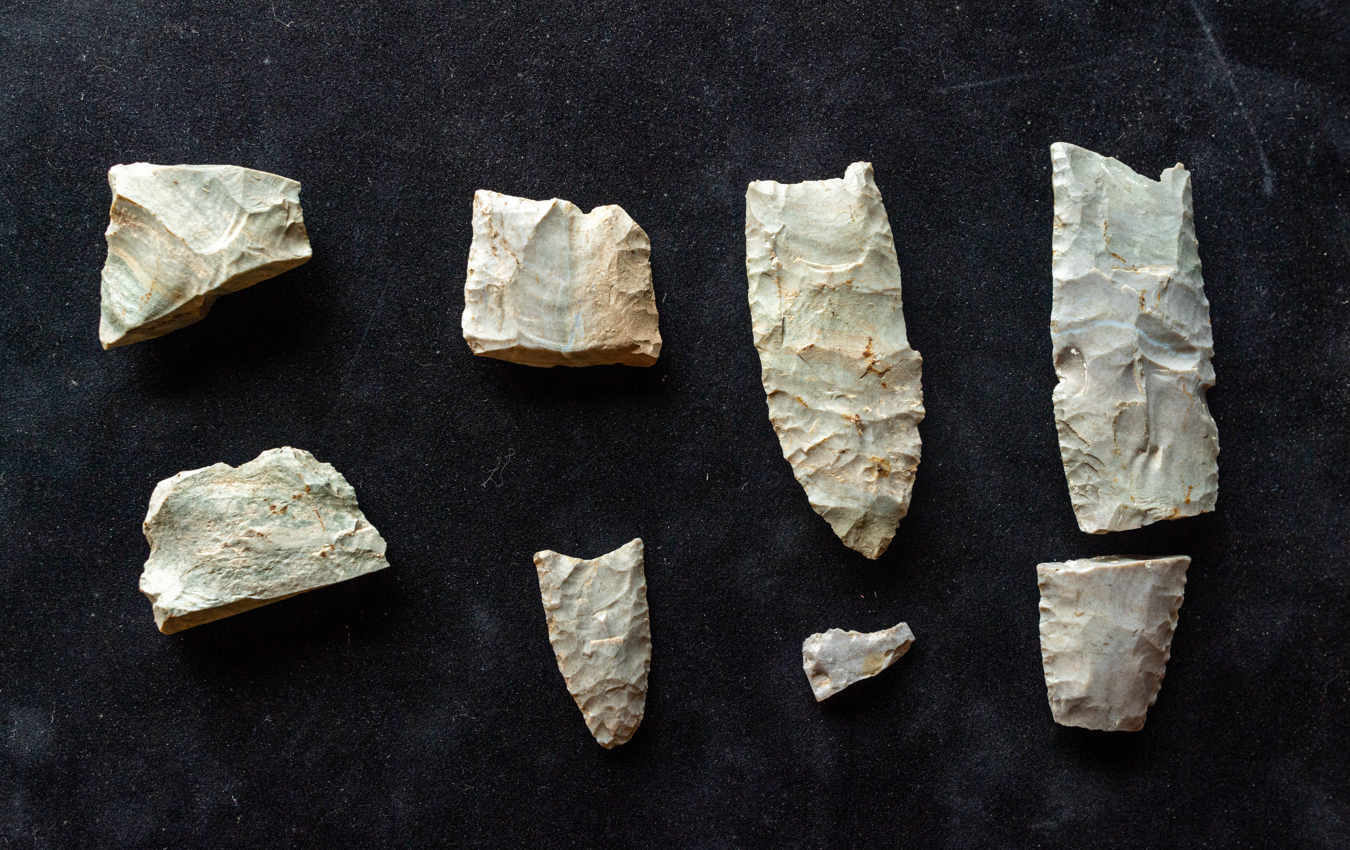Some 13,000 years ago, wandering people set up a campsite in the Great Lakes region and returned to the plot each summer. The site is one the earliest ever discovered in this part of North America, revealing fresh insights into the population of the continent.
The humans belonged to a group known as the Clovis people. Many scholars used to believe they were the first human inhabitants to set foot in the Americas, although this theory has been largely dispelled. Nevertheless, the Clovis people remain an important character in the story of prehistoric America.
In a new study, archaeologists have detailed a collection of stone tools found at an abandoned river channel in southwest Michigan called the Belson site.
Among the discoveries were spearheads that featured Clovis points, characterized by a central channel that runs down the length of the object, called a flute. This distinctive style of technology rapidly spread across the Americas around 13,000 years ago and has become ubiquitous in the archaeological record.
Analyzing the tools, the team uncovered traces of animal proteins from musk ox, caribou or deer, hare, and peccary. This suggests they were using the sharp points to butcher meat and provides a clear insight into the dietary culture of the Clovis people.
“Taken together, the ancient protein data suggests that these people had a broad spectrum diet, eating a wide variety of animals. Our findings are contrary to the popular notion that Clovis people were strictly big game hunters, most often subsisting on mammoths and mastodons,” Brendan Nash, lead study author and a doctoral student of archaeology at the University of Michigan, said in a statement.

Independent researcher Thomas Talbot and University of Michigan archaeologists have found more than 20 Clovis tools and hundreds of pieces of manufacturing and refurbishment debris at the Belson Clovis Site in St. Joseph County.
Image Credit: Daryl Marshke/Michigan Photography
Surprisingly, some of the tools were fashioned out of paoli chert, a type of rock formed in northeastern Kentucky. This led the researchers to believe some of the tools were made in what is now Kentucky and traded to people in central Indiana who then carried them to the Belson site in modern-day Michigan.
Based on the far-flung origins of the stone, Nash and the team believe the people who temporarily settled at the Belson site likely moved there during the summer while living in central Indiana during the frigid winter. They perhaps completed this seasonal back-and-forth for up to five years in a row.
“This site teaches us about a way of life lost to time. Through the sourcing of stone and the styles of tools, we are tracking a group of people as they live and travel across the Pleistocene landscape of the American Midwest,” explains Nash.
“In this way, people formed ‘links in a chain’ with yearly routes that likely connected the whole continent, from Michigan to Mexico. This is likely why technology from the Clovis period is so similar throughout most of North America,” he noted.
The new study is published in the journal PLOS ONE.
Source Link: 13,000-Year-Old Campsite In North America Shows A "Way Of Life Lost To Time"